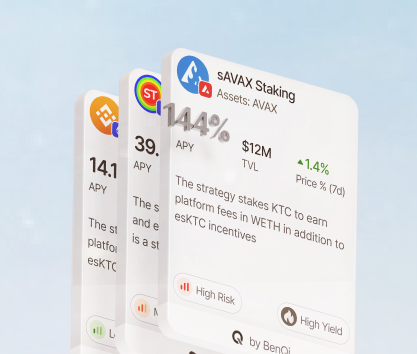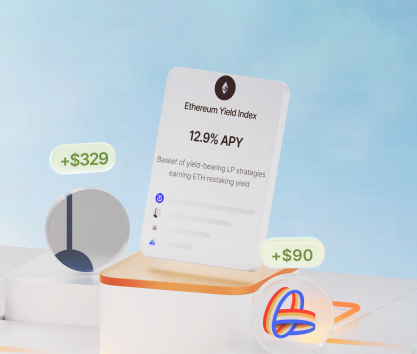Polygon is one of the biggest and fastest-growing layer-2 chains in the Ethereum ecosystem. It has been around for over 7 years. Today, it has over 210 million wallet addresses interacting with 1.17 million smart contracts. The total number of processed transactions is 2.44 billion. It is a massive infrastructural giant in the DeFi sector.
Many investors are constantly eyeing various investment opportunities created by the network. Staking rewards are quite good considering the MATIC tokenomics with over 12% dedicated to the funding rewards paid to investors who delegate tokens or become validators. This allocation ensures the long-term stability of the chain and its effectiveness at producing value for potential validators.
Polygon yield opportunities
The network offers a wide range of capital allocation methods. Contemporary investors interested in working within the DeFi ecosystem will find the diversity of instruments in this particular chain quite appealing. Below are some ways to allocate capital:
- DEXes are always seeking additional liquidity and offer great rewards to investors who are willing to provide it. Polygon is a popular chain supported by multiple decentralized exchanges offering pools with assets originating from this network. For instance, QuickSwap and SushiSwap on Polygon both offer great investment opportunities. QuickSwap offers a solid USDC-WETH pool with an impressive 9.72% APY. SushiSwap has a WMATIC-WETH pool with a 4.28% APY.
- Lending protocols are also very popular among investors who want to find a good place to park their capital. Since Polygon is supported by the biggest lending protocols, you will easily find a suitable option. However, APYs may be slightly lower compared to investing in layer 1. Despite some disadvantages, it is possible to find some great lending pools. Aave and Curve on Polygon are good examples. Aave has a very intriguing WBTC pool offering a meager 0.02% APY with rewards and bonuses on top.
- Staking directly on layer 2. The current reward percentage is 4.95% CRP which should not be confused with APY. The yield is a different number that depends on a variety of factors including validator fees (10% by default), staking duration, and other factors. You can use the official calculator to estimate potential profitability. For example, if you stake 10,000 POL at a 10% validator fee for 365 days, your MATIC token staking rewards will be close to 3.84% APY which is slightly below the US treasury bond yield (4% in November).
- You can also bridges to accumulate rewards. While the number of these protocols has dropped dramatically due to poor security and massive hacks, the ones that are still operational provide a much better level of protection and offer generous rewards to liquidity providers. For example, Allbridge Classic is a Polygon bridge that transfers stablecoins from one chain to another. It currently has USDC, USDC.E, and USDT pools with the overall TVL slightly above $1.2 million.
Polygon is a scalable and diverse ecosystem supported by many multi-chain protocols. It means that you can find a plethora of ways to allocate capital efficiently. Some pools here have incredibly high utilization and pay extraordinary rates. You can find a variety of interesting instruments including pools offered by lending platforms, DEXes, AMMs, and many other projects. For example, polygon
Some of the best cross-chain yield strategies use various Polygon protocols extensively. Note that we do not suggest focusing on this particular network as it has lesser-known projects and generally offers lower returns compared to many other chains. On the other hand, the variety of investment options may seem appealing to many capital holders. Discussing this diversity is important as it may allow some investors to make a more informed choice.
DeFi protocols on Polygon
Currently, Polygon has 537 different tracked protocols with at least 44 of them having a TVL higher than $1 million. Multi-chain projects that support the network include Aave, Uniswap, Spiko, QuickSwap, Compound, Tangible, Balance, Curve, Beefy, and many others. The combined TVL of the chain is over $1.17 billion which may not seem impressive, but it is still bigger than Avalanche, Aptos, Optimism, and a multitude of other chains.
One of the reasons why so many people are choosing this particular blockchain is that it has innate gas fee advantages thanks to the use of ZK technology. Just like in the case of Arbitrum, it is cheaper to transact on layer 2 since all operations are rolled up and settled on the mainnet in bulk cutting down average fees by an order of several magnitudes.
Below are several great protocols with rewards:
- Meshswap is a DEX and an investment protocol that was hugely popular back in 2022 when it first launched. Despite falling out of favor, it is still an interesting destination for capital holders interested in low-cost yield farming. The DEX has 81 pools with an average APY of 32.66% as of November 2024. You can receive up to 252% in MESH rewards by investing in the USDC-OMOOI pool.
- Merkl is a multi-chain investment protocol that operates across 8 chains including Ethereum, Optimism, Arbitrum, and Polygon. The platform offers 148 pools with roughly 30% of them representing the Polygon network. With an average APY of 34.45%, it is a lucrative option for many investors seeking solid returns. One of the biggest pools offered on Polygon by Merkl is USDC-WETH with a $1.48 million TVL and an 18.41% reward APY paid in QUICK.
- SmarDex is a relatively small exchange protocol on Polygon that offers many perks and some excellent rewards in SDEX tokens. As of the time of writing, the platform has a $10.47 million TVL and 32 pools offering 19.81% APY. The SDEX is traded at $0.0074 with the market cap exceeding $64 million. You can start investing in the USDC-SDEX pool on Polygon to receive up to 29.4% in SDEX rewards.
Using a yield optimizer on Polygon
The network is supported by three protocols that are focused on aggregating yields and seeking the best investment option for users. If you are interested in achieving the most sensible profitability level without exposing yourself to excess risks, it is important to utilize these tools. This chain has multiple pools that are of interest to multiple platforms that are searching for the best yields in the ecosystem.
Here are these three Polygon yield aggregators:
- Beefy Finance is the biggest of the three. It operates across 8 chains including Ethereum, BSC, Arbitrum, and Polygon. The protocol has a massive $268 million TVL and works with 786 pools averaging 403% APY. Beefy offers 40 pools on Polygon with the biggest one on Convex Finance (DAI-USDCE-USDT-WBST-ETH) yielding 1.37% APY.
- Harvest Finance is a yield farm that has a TVL of $26 million and offers 75 pools with an average APY of 85.34% in November 2024. It seems that Harvest is slowly reducing its presence on the Polygon network with the biggest pool offered to users (ETH-USDC) barely having $22K in TVL despite the massive 278% APY.
- Affine DeFi Earn is a promising project that was launched just a year ago. Despite raising over $1.8 million, the protocol did not meet expectations and has been dwindling down its operations. Nevertheless, it still has two pools. MATIC (10x leveraged pool) has a $275K TVL with a 75% APY. USDC Earn offers 6.26% APY with a TVL of just under $100K.
Beefy is still the best choice for the vast majority of investors interested in exploring the network and its protocols. If you cannot invest with this aggregator, consider avoiding low-TVL pools altogether and focus only on reliable options.
Why should you focus on Polygon smart contract farming?
This chain is still one of the promising blockchain projects in the DeFi ecosystem. While its usefulness and adoption rates are still lackluster, the technological foundation is solid. With over 28 thousand developers creating apps and contracts for this network, it is easy to see the potential for growth and future expansion. However, as an investment prospect, this chain has been underperforming.
Despite being one of the best layer-2 scaling solutions available to developers, Polygon failed to capture the audience of crypto enthusiasts. Solana, Arbitrum, Base, BSC, Tron, Ethereum, and Bitcoin are all ahead of Polygon in terms of flexibility, diversity, adoption, and user activity.
The unpredictable nature of the ecosystem negatively affects all assets associated with it causing massive volatility issues. While some volatility is good, when prices fluctuate too much many investors observe in horror how their impermanent loss on Polygon turns into something tangible and very permanent.
So, what are the advantages of investing in Polygon early?
- POL is still a highly valuable digital asset with the current market capitalization exceeding $869 million and transaction volumes hovering above $450 million quite often. The Mcap of stablecoins locked in the network is over $2.13 billion.
- Trading volumes have been trending upward recently reaching $760 million in November. POL (MATIC) has experienced similar growth in volumes reaching $17 million. These metrics are still way below this year’s highs but some semblance of hope is quietly smoldering.
- The Polygon network scalability has proven to work well for many protocols. The issue is the slow deployment of improvements and the announcement of the Polygon 2.0 update which has some questionable propositions from the community.
We believe that there is merit in allocating capital to some pools on Polygon if you are interested in earning rewards specifically from the chain. It has some potential for growth and promises to improve its technical capabilities in the near future.









